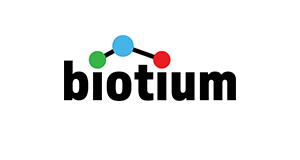Ep-CAM / CD326 (Epithelial Marker), CF740 conjugate, 0.1mg/mL
Ep-CAM / CD326 (Epithelial Marker), CF740 conjugate, 0.1mg/mL
SKU
BTMBNC741647-500
Packaging Unit
500 uL
Manufacturer
Biotium
Availability:
loading...
Price is loading...
Description: EGP40 is a 40-43 kDa transmembrane epithelial glycoprotein, also identified as epithelial specific antigen (ESA), or epithelial cellular adhesion molecule (Ep-CAM). It is expressed on baso-lateral cell surface in most simple epithelia and a vast majority of carcinomas with the exception of adult squamous epithelium, hepatocytes and gastric epithelial cells. Ep-CAM antibody has been used to distinguish adenocarcinoma from pleural mesothelioma and hepatocellular carcinoma. Ep-CAM antibody is also useful in distinguishing serous carcinomas of the ovary from mesothelioma.Primary antibodies are available purified, or with a selection of fluorescent CF® Dyes and other labels. CF® Dyes offer exceptional brightness and photostability. Note: Conjugates of blue fluorescent dyes like CF®405S and CF®405M are not recommended for detecting low abundance targets, because blue dyes have lower fluorescence and can give higher non-specific background than other dye colors.
Product Origin: Animal - Oryctolagus cuniculus (domestic rabbit), Bos taurus (bovine)
Conjugate: CF740
Concentration: 0.1 mg/mL
Storage buffer: PBS, 0.1% rBSA, 0.05% azide
Immunogen: Recombinant human TACSTD1 protein
Antibody Reactivity: CD326/Ep-CAM
Entrez Gene ID: 4072
Z-Antibody Applications: IHC, FFPE (verified)
Verified AB Applications: IHC (FFPE) (verified)
Antibody Application Notes: Higher concentration may be required for direct detection using primary antibody conjugates than for indirect detection with secondary antibody/Immunofluorescence: 1-2 ug/mL/Immunohistology (formalin) 1-2 ug/mL/Staining of formalin-fixed tissues requires boiling tissue sections in 10 mM citrate buffer, pH 6.0, for 10-20 min followed by cooling at RT for 20 min/Flow Cytometry 0.5-1 ug/million cells/0.1 mL/Western blotting 0.5-1 ug/mL/Optimal dilution for a specific application should be determined by user
Product Origin: Animal - Oryctolagus cuniculus (domestic rabbit), Bos taurus (bovine)
Conjugate: CF740
Concentration: 0.1 mg/mL
Storage buffer: PBS, 0.1% rBSA, 0.05% azide
Immunogen: Recombinant human TACSTD1 protein
Antibody Reactivity: CD326/Ep-CAM
Entrez Gene ID: 4072
Z-Antibody Applications: IHC, FFPE (verified)
Verified AB Applications: IHC (FFPE) (verified)
Antibody Application Notes: Higher concentration may be required for direct detection using primary antibody conjugates than for indirect detection with secondary antibody/Immunofluorescence: 1-2 ug/mL/Immunohistology (formalin) 1-2 ug/mL/Staining of formalin-fixed tissues requires boiling tissue sections in 10 mM citrate buffer, pH 6.0, for 10-20 min followed by cooling at RT for 20 min/Flow Cytometry 0.5-1 ug/million cells/0.1 mL/Western blotting 0.5-1 ug/mL/Optimal dilution for a specific application should be determined by user
| SKU | BTMBNC741647-500 |
|---|---|
| Manufacturer | Biotium |
| Manufacturer SKU | BNC741647-500 |
| Package Unit | 500 uL |
| Quantity Unit | STK |
| Reactivity | Human |
| Clonality | Polyclonal |
| Application | Immunohistochemistry |
| Isotype | IgG kappa |
| Host | Rabbit |
| Conjugate | Conjugated, CF740 |
| Product information (PDF) | Download |
| MSDS (PDF) | Download |

 Deutsch
Deutsch







